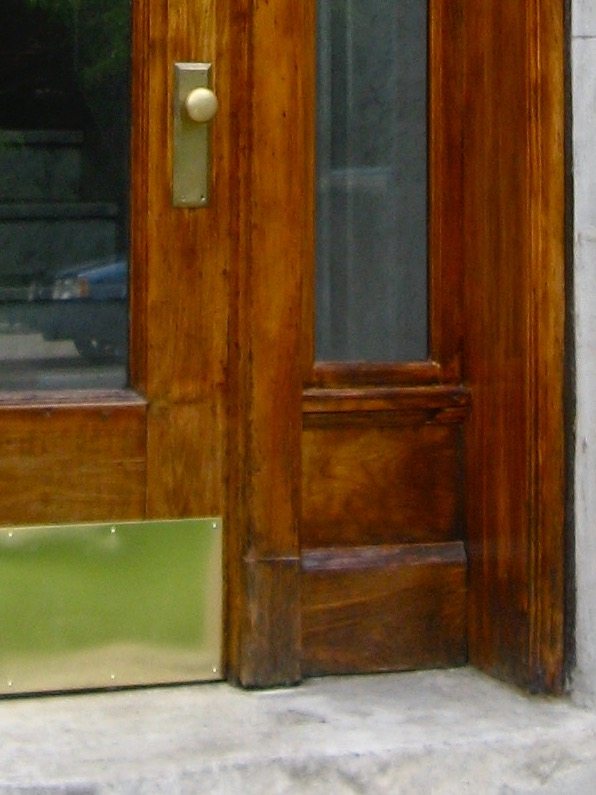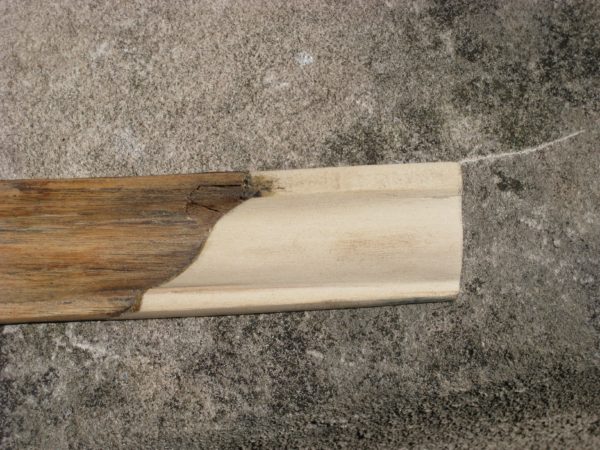Functional Restoration
Because wood is so lively, it can often be “healed” rather than repaired
Soft wood can be hardened. New wood patches can be spliced in and blended with old wood to be virtually invisible to any but the most critical eye. Veneers can be replaced. Wood can even be painted on in a “faux bois” (fake wood) decorative finish. Because wood is organic, it is malleable. Here are a sampling of the kinds of repairs Oak Brothers can do.
Veneer Repair and Replacement
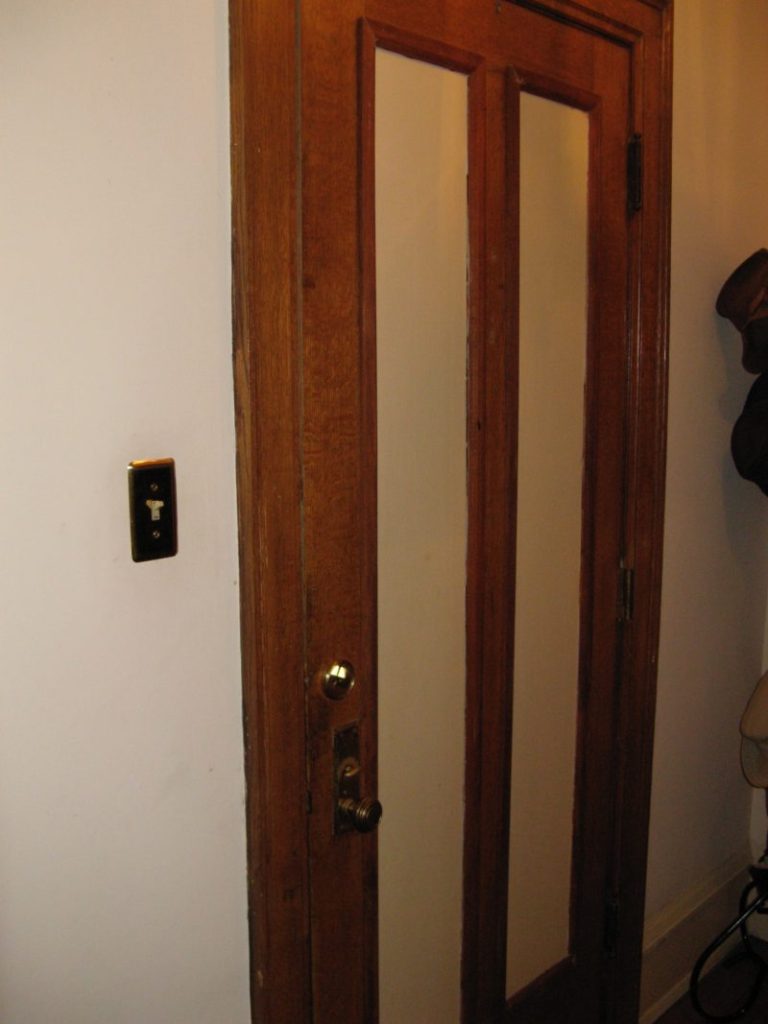
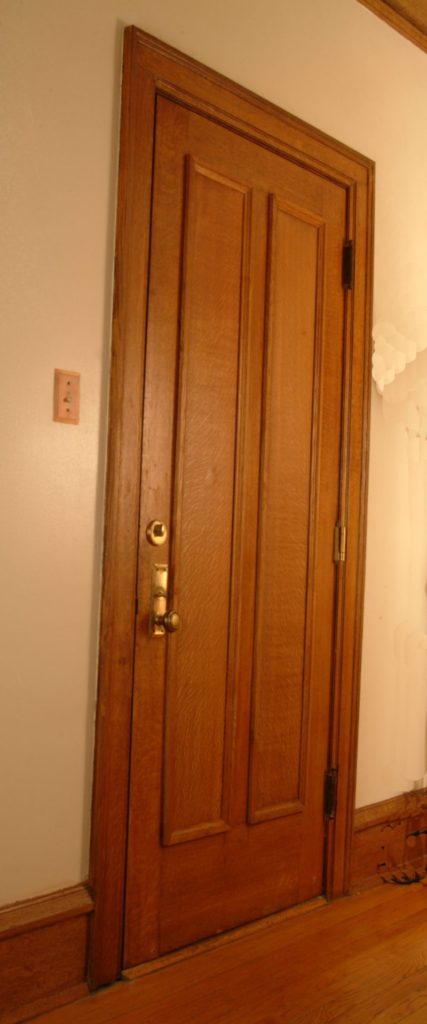
As the picture on the far left reveals, the center panels of this door had been replaced with non-combustible material in a misguided attempt to fire-proof the door. Covering the door with veneer and patinating the veneer panels to make it blend with the original wood door recovered the integrity and dignity of this door.
Wood Inlay
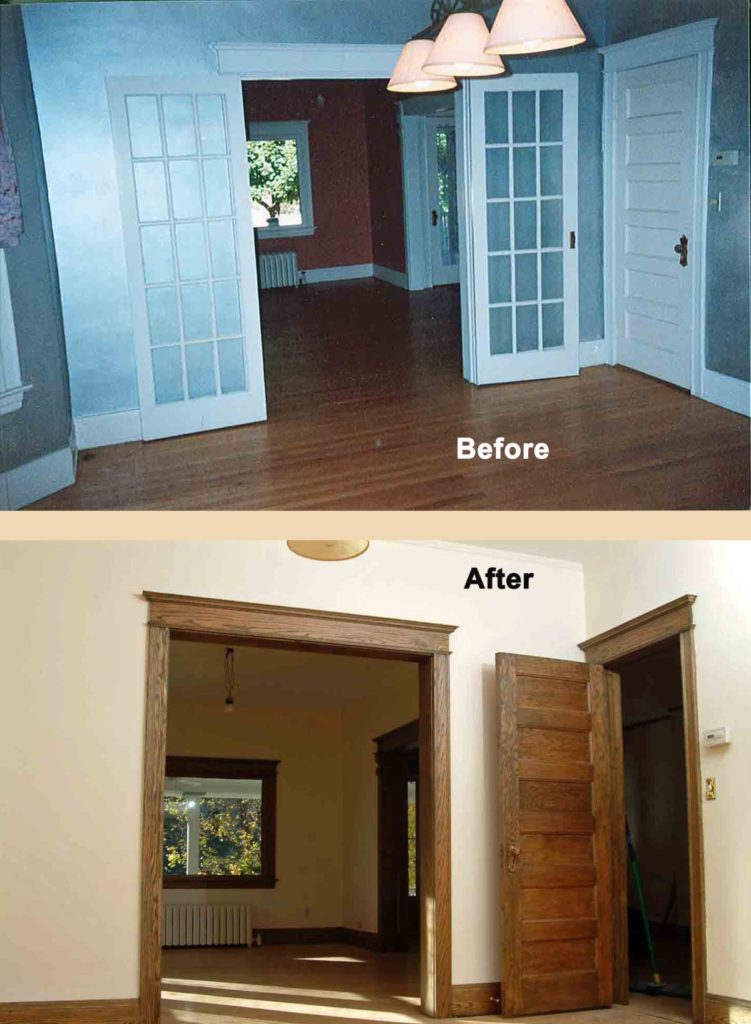
As can be seen in the before photo, a set of french doors had previously separated these rooms. But the client wanted to have them removed, preferring an open floor plan.

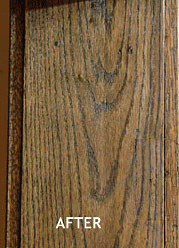
Because we also removed the paint from all of the woodwork, the mortises for the door hinges had to be filled with wood inlays of the same species as the doorframe. By also choosing wood that has a matching grain structure, the patch becomes virtually invisible.
Scarf Repair
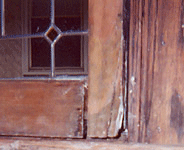
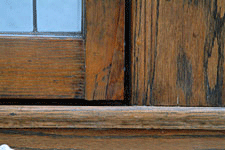
Also called a “dutchman’s repair,” a scarf repair is used when only part of a wood element needs to be replaced. The damaged or rotted section of wood is excavated and a clean line for gluing is established. A patch of wood is then glued on and blended to match the existing wood. In this repair pictured below, a scarf repair has been used to salvage a valuable window sash.
Epoxy Repair

This exterior door frame was the perfect place to make use of wood hardening epoxy liquid followed by a paste epoxy to rebuild a molded wood edge. The epoxy was then tinted to match the existing wood.
While a more elegant repair might be preferred for interior wood, the flexibility of epoxy allowed for repair of this wood without dismantling substantial parts of the sidelight.
